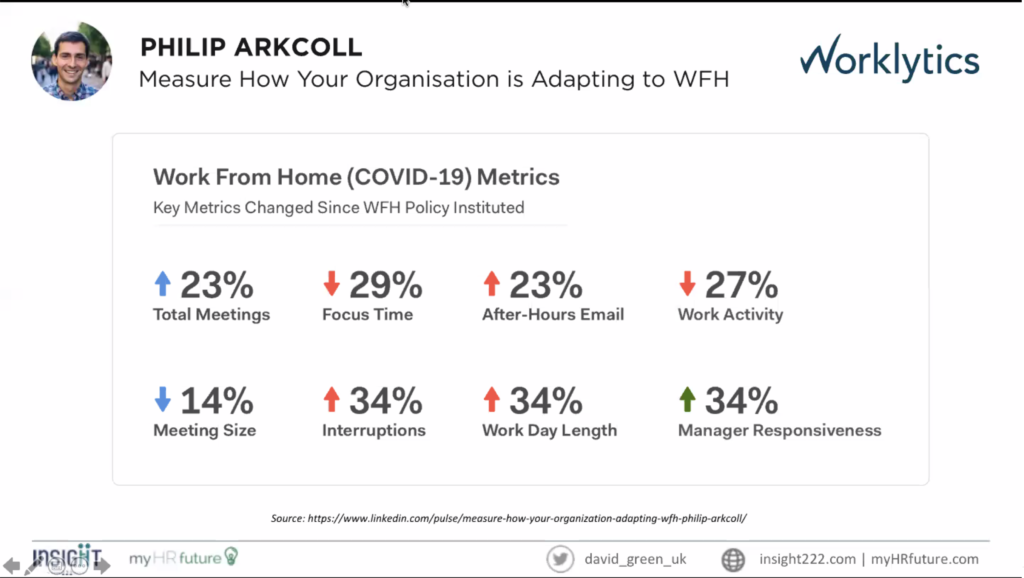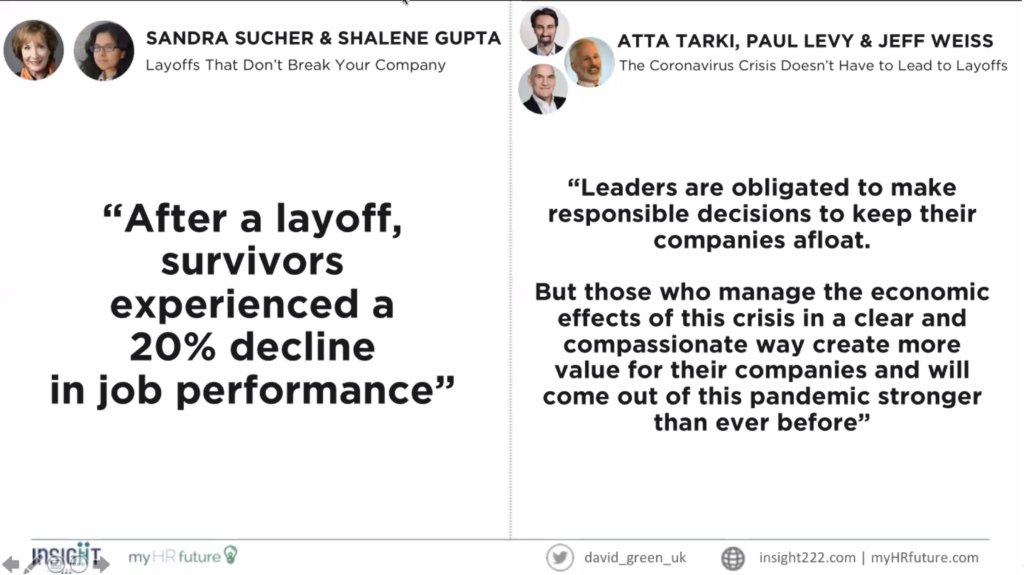Why Employee Listening Matters More than Ever–and How Data Helps
In our recent crisis management open forum, we learned how people analytics plays a key role in keeping employees engaged, happy, and safe.

We’ve created an e-book to help you navigate the three stages of a crisis with the right workforce questions and data analysis. Download it here. You may also find this checklist on Key Questions to Answer During a Crisis handy. Check it out at this link. Looking for more resources to guide you through crisis management? Visit our Crisis Management Resource Center.
As we find our way in this new normal, we also find ourselves in a defining moment for people analytics. People analytics plays a key role in the way that we understand our employees and how to keep them safe, happy, and engaged during this time.
This was an important theme in our April 8 open forum on using people analytics to strengthen employee engagement during a pandemic. During the discussion, leading experts and practitioners in the data and analytics field shared best practices for listening to and supporting employees through this time. You can view the recording here.
Here’s a recap of the main topics from the webinar.
The future of work is accelerating
This pandemic is forcing companies to redefine the way they work.
As Ken Oehler, Senior Partner, Global Culture & Engagement Practice Leader at Kincentric, said, it’s an opportunity to make progress on initiatives that companies already had like creating a culture of caring or promoting virtual work.
With this sudden opportunity, however, comes a responsibility. Companies need to regularly check-in with their employees and make sure that they are physically and mentally healthy. Since more people are working from home, the line between work and life balance is blurring, and burnout is more likely to occur.

David Green, Executive Director at Insight222, shared a selection of insights from his top COVID-19 resources for HR and people analytics. He also talked about his thoughts on how HR is leading the response to this crisis in their organizations. Looking at 10 lessons from the world’s HR leaders, it’s clear that there’s a people analytics and employee experience angle to explore.
In addition, David points out that in this new normal, you must encourage employees to speak up about what’s working and what’s not working. Without this data, it’s impossible to make informed decisions around employee engagement.
Prioritizing employee engagement and listening
One way to get feedback from your employees is through surveys, but companies should only send them out periodically, warned Dr. Kenneth Matos, the Director of People Science at Culture Amp. He explains that you should survey as often as things are changing, and you’re able to respond. If those two things aren’t aligned, then you end up with people feeling like you’re poking them constantly while they’re busy in a crisis, but not helping them.
To effectively survey employees, companies should avoid general, open-ended questions and instead, ask more actionable questions. Then, look at the responses. If a few responses raise concern around a similar issue, it’s probably an issue across the organization. The numbers won’t tell the whole story.
This is because, as Dr. Laura Stevens, Continuous Listening Leader at Deloitte pointed out, people are more sensitive than ever. They’re afraid to lose their jobs and work under very stressful conditions. It’s essential to be aware that, right now, people may answer surveys in a way they feel is socially acceptable because they’re afraid of repercussions. This is an even bigger concern for companies with essential workers, who aren’t able to work from home.
With layoffs looming, many employees don’t feel like they can speak up. This has an impact on the employee experience now, and after a crisis ends.

However, as Sarah Johnson, Vice President Enterprise Surveys & Analytics at Perceptyx points out, there’s value in transparency. Recent data shows that employees appreciate when leaders acknowledge that they don’t know what’s ahead. It’s important to not rush into layoff decisions, but to instead make those decisions based on data, and be clear with employees about what’s happening.
How companies are responding
Matthew Hamilton, Head of HR Strategy & People Analytics explained how his company, Protective Life, is using Visier to see the rate of change in the spread of the virus. This will help the organization determine when it’s safe to go back to the office. They know that this will happen in phases, so they need to use data to understand what to prioritize.
And now that more data about COVID-19 is coming from the CDC, they can also use data to better inform their communications with employees. This will help their people make better judgments about when to return to work if they are at risk.
David Shontz, Head of Workforce Analytics & Organization Management at Nokia is using data differently as they navigate this crisis with a global workforce. They now have an information hub so that everyone understands where employees are, which offices are closed, and what restrictions are in different areas.
They’re also using surveys to check-in with employees to see how everyone is coping. The answers range from “I can’t work” to “We’re doing better.” This helps leaders provide better support and boost engagement.
Meet your employees where they are
The key to figuring out the next best step for your workforce is meeting your employees where they are. Conner Forrest, Senior Analyst at 451 Research shared survey results showing that 35% of employees feel they were somewhat or very much more disengaged at work. Conner suggests using analytics to determine what makes some employees more engaged than others, and then, connect your data points to see how you can improve the overall employee experience.
Steve Goldberg, VP and Research Director, HCM of Ventana Research, suggests that identifying the predictor of impending employee engagement changes, particularly the ones that may seem counterintuitive, can be the most insightful. For example, finding that being under-staffed might correlate with higher engagement than being over-staffed since employees may feel more valued and like they’re making a difference. Pay attention to any data points around these intrinsic needs and motivators.
Also, what employees may really need during this time is support and flexibility as they try to balance life and work in uncertain times. When employees feel that their leaders understand and genuinely advocate for them, it can lead to higher levels of engagement.
As Trevor White, Analyst at Nucleus Research points out, it’s also important to consider providing learning opportunities that aren’t related to work. A short yoga class can help employees feel more productive and engaged. Offering a common core math class to help parents struggling to home school their kids can help overwhelmed employees feel supported.
Above all, organizations must put the mental and physical health of their employees first. Leaders have to support them and help them understand what to prioritize and de-prioritize at work so that they can take care of themselves and their families first.
Learn from the crisis management open forum
For more best practices on how to use people analytics for crisis management, review these key takeaways from our last open forum. You can also register for the upcoming open forums here.
Share your people data insights
Share insights, ask questions, and discover the latest best practices on crisis management and employee safety using people analytics via the #AskVisier LinkedIn community.


